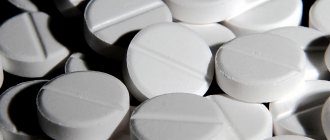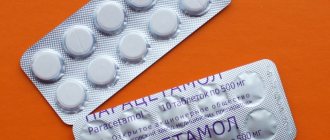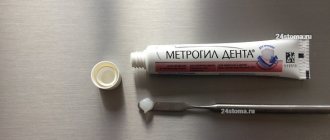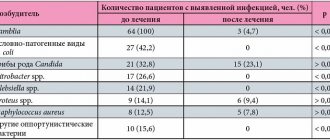Home | About us | Delivery | Advertisers | Login | Registration
Delivery on Sundays and holidays does not work!
- Medicines
- dietary supplementsVitamins
- Categories from A to Z
- Brands from A to Z
- Products from A to Z
- Medical equipment
- beauty
- Child
- Care
- Honey products appointments
- Herbs and herbal teas
- Medical nutrition
- Journey
- Making medicinesStock
Pharmacy online is the best pharmacy in Almaty, delivering medicines to Almaty. An online pharmacy or online pharmacy provides the following types of services: delivery of medicines, medicines to your home. Online pharmacy Almaty or online pharmacy Almaty delivers medicines to your home, as well as home delivery of medicines in Almaty.
my basket
Apteka84.kz is an online pharmacy that offers its customers medicines, medicinal and decorative cosmetics, dietary supplements, vitamins, baby food, intimate products for adults, medical equipment and thousands of other medical and cosmetic products at low prices. All data presented on the Apteka84.kz website is for informational purposes only and is not a substitute for professional medical care. Apteka84.kz strongly recommends that you carefully read the instructions for use contained in each package of medicines and other products. If you currently have any symptoms of the disease, you should seek help from a doctor. You should always tell your doctor or pharmacist about all the medicines you take. If you feel you need further help, please consult your local pharmacist or contact our GP online or by telephone.
© 2022 Pharmacy 84.
Pharmacodynamics and pharmacokinetics
Paracetamol is a non-narcotic pain reliever , the properties and mechanism of action of which are determined by the ability to block (mainly in the central nervous system) COX-1 and COX-2, while affecting the centers of thermoregulation and pain.
The drug does not have an anti-inflammatory effect (the anti-inflammatory effect is so insignificant that it can be neglected) due to the fact that the effect of the substance on COX is neutralized in inflamed tissues by the enzyme peroxidase.
The absence of a blocking effect on Pg synthesis in peripheral tissues determines that the drug does not have a negative effect on the exchange of water and electrolytes in the body, as well as on the mucous membrane of the digestive canal.
Absorption of the drug is high, Cmax ranges from 5 to 20 mcg/ml. Concentration in the blood reaches a maximum within 0.5-2 hours. The substance can pass through the BBB.
Paracetamol during breastfeeding penetrates into the milk of a nursing mother in an amount not exceeding 1%.
The substance is biotransformed in the liver. If metabolization is carried out under the influence of microsomal liver enzymes, toxic products of intermediate metabolism are formed (in particular, N-acetyl-b-benzoquinoneimine), which, with low levels of glutathione in the body, can cause damage and necrosis of liver cells.
Glutathione reserves are depleted when taking 10 grams or more of paracetamol.
Two other pathways of paracetamol metabolism are conjugation with sulfates (predominant in newborns, especially those born prematurely) and conjugation with glucuronides (predominant in adults).
Conjugated metabolic products exhibit low pharmacological activity (including toxic).
T1/2 - from 1 to 4 hours (in older people this figure can be longer). It is excreted mainly in the form of conjugates by the kidneys. Only 3% of paracetamol taken is excreted in its pure form.
Interaction
The drug reduces the effectiveness of uricosuric drugs . The concomitant use of high doses of the drug increases the effect of anticoagulants by reducing the production of procoagulants in the liver.
Drugs that induce microsomal oxidation in the liver, ethanol and hepatotoxic drugs stimulate the production of hydroxylated active metabolites, which can provoke the development of severe intoxication even with a slight overdose.
The effectiveness of the drug decreases with long-term treatment with barbiturates . Ethanol provokes the development of acute pancreatitis . Drugs that suppress microsomal oxidation in the liver reduce the risk of hepatotoxic effects.
Long-term combined use with other NSAIDs can lead to the development of renal papillary necrosis , “analgesic” nephropathy , and the onset of end-stage (dystrophic) renal failure .
Concomitant use of the drug (in high doses) and salicylates for a long time increases the likelihood of developing bladder or kidney cancer . Diflunisal increases the plasma concentration of paracetamol by 50% and, therefore, the risk of hepatotoxicity .
Myelotoxic drugs increase the hematotoxicity of the drug, antispasmodics delay its absorption, enterosorbents and cholesterol reduce bioavailability.
special instructions
Is paracetamol an antibiotic or not?
The drug is not an antibiotic; its action is aimed at reducing pain and reducing fever. Antibiotics inhibit the growth and reproduction of bacteria.
Does the drug increase or decrease blood pressure?
It is reliably known that the drug does not have any effect on blood pressure (BP).
The drug can help normalize blood pressure only indirectly if its increase is a reaction to pain (by reducing its severity, Paracetamol also reduces blood pressure levels).
What is the difference between Paracetamol from different manufacturers?
Drugs from different manufacturers may differ slightly in the composition of auxiliary components and price. The basis is the same substance.
Thus, there is no difference in what Paracetamol MS helps with and what Paracetamol UBF tablets help with.
Recipe in Latin (sample): Rp: Sup. Paracetamoli 0.05 (0.1; 0.25) Dtd N 10 in sup.
Rp: Tab. Paracetamoli 0.2 Dtd N 1 pack. S. ½ tablet 2-3 times a day
Side effects
Side effects most often manifest themselves in the form of hypersensitivity reactions. Symptoms of an allergy to the drug: urticaria , itchy skin , rash , angioedema .
Sometimes taking the drug may be accompanied by hematopoietic ( agranulocytosis, thrombocytopenia, pancytopenia, leukopenia, neutropenia ) and dyspeptic symptoms .
With long-term use of high doses, hepatotoxic effects .
Paracetamol during pregnancy and lactation. Can pregnant and lactating women take the drug?
The instructions indicate that the drug penetrates the placenta, but until now the negative effect of Paracetamol on the development of the fetus has not been established.
Can I take Paracetamol during pregnancy?
Studies have found that the use of the drug during pregnancy (especially in the second half of pregnancy) increases the risk of respiratory disorders, asthma , allergic manifestations, and wheezing in the child.
Moreover, in the 3rd trimester the toxic effect of infections is no less dangerous than the effect of some drugs. Hyperthermia in the mother can cause hypoxia in the fetus.
Taking the drug in the 2nd trimester (namely from 3 months to approximately 18 weeks) can cause the child to develop malformations of internal organs, which often appear only after birth. In this regard, the drug is prescribed for occasional use and only in extreme cases.
However, this particular remedy is considered the safest analgesic for expectant mothers.
There is no clear answer to the question whether it is possible to take Paracetamol during early pregnancy. In the first weeks, taking the drug can cause a miscarriage and, like any other medicine, cause defects incompatible with life.
So, can pregnant women take Paracetamol? It is possible, but only if there is evidence. Before taking the pill, you should weigh the pros and cons. Sometimes a high temperature in a mother is less dangerous for the fetus than anemia or renal colic due to taking medication.
Dosage during pregnancy
Use of high doses of the drug during pregnancy can negatively affect the condition of the liver and kidneys. Pregnant women with a fever due to influenza or ARVI should start taking the medicine with 0.5 tablets. for 1 appointment. The maximum duration of treatment is 7 days.
Paracetamol during breastfeeding. Can nursing mothers take Paracetamol?
Paracetamol passes into breast milk in minimal quantities during lactation. Therefore, if the drug is used during breastfeeding for no more than 3 days in a row, there is no need to stop lactation.
The optimal dosage for breastfeeding is no more than 3-4 tablets. 500 mg per day. The medicine should be taken after feeding. Moreover, next time it is better to feed the child no earlier than 3 hours after taking the pill.
Analogs
Level 4 ATC code matches:
Phenacetin
Combiflu
Chlorphenamine
Coldflu
Calpol
Fervex
Panadol Extra
Panadol for children
Panadol
Solpadeine
Efferalgan
Milistan
Coldrex Maxgripp
Coldrex Hotrem
Coldrex
AntiGrippin
Unispaz
Pentalgin Plus
Rapidol
Maxicold
Paracetamol-containing drugs: Paracetamol 325 , Paracetamol MS , Strimol , Flutabs , Perfalgan , Paracetamol Extratab , Paracetamol UBF , Cefekon D , Efferalgan , Panado Daleron , Ifimol .
Analogs with a similar mechanism of action, but an excellent active ingredient: Antigrippin , Antiflu , Caffetin , Coldrex , Maxicold , Novalgin , Panadol Extra , Solpadein , TeraFlu , Femizol , Fervex .
Which is better: Paracetamol or Ibuprofen?
Ibuprofen ( Nurofen ) has a wider spectrum of action and has a more favorable effect on the temperature curve compared to Paracetamol. The effect of its use occurs faster (after 15-25 minutes) and lasts longer (up to 8 hours), in addition, the drug is considered less harmful and less likely to provoke allergic reactions.
Ibuprofen is better than its analogue in relieving critically high fever. It is used repeatedly (to control hyperthermia) much less frequently than Paracetamol.
The strength of the antipyretic effect is comparable; however, ibuprofen , in addition to analgesic and antipyretic effects, also effectively relieves inflammation in peripheral tissues. This is due to the fact that paracetamol acts primarily in the central nervous system, and ibuprofen suppresses Pg synthesis not so much in the central nervous system as in inflamed peripheral tissues.
That is, in case of severe peripheral inflammation, the choice should be made in favor of Nurofen ibuprofen -based drugs .
Answering the question “What to choose, Paracetamol or Nurofen?”, doctors recommend starting treatment of young children with Ibuprofen . If necessary, any of the drugs can be used to urgently reduce the temperature. Subsequent treatment must be agreed with your doctor. You should know that suppositories with ibuprofen are contraindicated for children weighing up to 6 kg, and the suspension is contraindicated for children under 3 months.
Is it possible to alternate Nurofen or Paracetamol?
The use of paracetamol and ibuprofen together may be justified if the temperature is difficult to control when using each drug in monotherapy. The means are used alternately. Depending on the situation, the doctor, for example, may advise giving the child Nurofen , and after 10 minutes give him a suppository with Paracetamol.
What is better - Paracetamol or Aspirin?
If we compare drugs, they have the same effect when it is necessary to reduce high fever.
What is aspirin ? Analgesic and antipyretic based on acetylsalicylic acid , an NSAID with all the side effects inherent in drugs from this group.
When choosing which is better for fever, you should know that Aspirin relieves fever faster and more effectively, but the risk of an overdose is much higher than the risk of an overdose of Paracetamol, in addition, the use of Aspirin for a viral infection can provoke Ray's syndrome - a complication that in every 5th case it leads to death.
Aspirin acts on the same structures of the brain and liver as individual viruses, so it is used as the safest and most effective remedy for hyperthermia, which is accompanied by bacterial infections ( pyelonephritis , tonsillitis , etc.). Paracetamol is the drug of choice for viral infections .
Paracetamol and Aspirin together form part of the drug Parcocet , which is used to treat colds and flu .
Paracetamol overdose
Symptoms of overdose that appear on the first day:
- nausea;
- pale skin;
- vomit;
- abdominal pain;
- anorexia;
- metabolic acidosis;
- disturbance of glucose metabolism.
, signs of liver dysfunction may appear .
Severe poisoning provokes:
- functional liver failure with progressive encephalopathy ;
- pancreatitis;
- arrhythmia;
- acute functional kidney failure with tubular necrosis;
- to whom.
The most serious consequence of an overdose is death .
Treatment involves administering acetylcysteine and methionine , which are precursors for the synthesis of glutathione, as well as SH-group donors.
Further treatment depends on how long ago the drug was taken and what its concentration in the blood is.
Alcohol compatibility
Paracetamol and alcohol are incompatible.
Wikipedia notes that the lethal dose of Paracetamol for an adult is 10 grams or more. Severe liver damage leads to death , which is caused by a sharp decrease in glutathione reserves and the accumulation of toxic products of intermediate metabolism, which have a hepatotoxic effect.
In men who systematically drink more than 200 ml of wine or 700 ml of beer per day (for women this is 100 ml of wine or 350 ml of beer), even a therapeutic dose of the drug can be a lethal dose, especially if little time has passed between taking Paracetamol and alcohol.
Indications for use
Indications for use of Paracetamol:
- pain syndrome (the drug is taken for toothache, algodismenorrhea , headache, neuralgia , myalgia , arthralgia , migraine );
- febrile conditions developing against the background of infectious diseases .
A tablet crushed into powder is an emergency solution for acne (apply the medicine to the affected area for no more than 10 minutes).
When it is necessary to quickly relieve pain and inflammation (for example, after surgery), as well as in situations where taking tablets/suspension orally is not possible, IV Paracetamol may be prescribed.
The medicine is intended for symptomatic therapy, reducing the intensity of inflammation and pain at the time of use. It has no effect on the progression of the disease.
Why is Paracetamol needed for colds?
What is Paracetamol? This is a non-narcotic drug with pronounced antipyretic effectiveness, which allows you to relieve pain with the minimum possible negative consequences for the body.
The advisability of using a drug for colds is due to the fact that the characteristic symptoms of an episode of a cold are: high (often spasmodic) temperature, increasing as the body temperature rises, weakness, general malaise, pain (usually expressed as a migraine).
The main advantage of using Paracetamol for temperature is that the antipyretic effect of the drug is close to the natural mechanisms of cooling the body.
By acting on the central nervous system, the drug localizes the action in the hypothalamus, which helps normalize the process of thermoregulation and allows you to activate the body's defense mechanisms.
In addition, in comparison with most other NSAIDs, the drug acts selectively and provokes a minimal number of side effects.
Does Paracetamol help with headaches?
The drug is effective for any pain of moderate intensity. However, it is intended for symptomatic treatment. This means that the medicine helps eliminate symptoms without eliminating the cause that caused them. It should be used once.



